Banana is a nourishing fruit that grows in the tropics and is popular throughout the world. The banana plant grows from 8 to 30 feet (2.4 to 9 meters) tall, depending on the variety, and looks like a tree. But it is not a tree because it has no woody trunk or boughs.
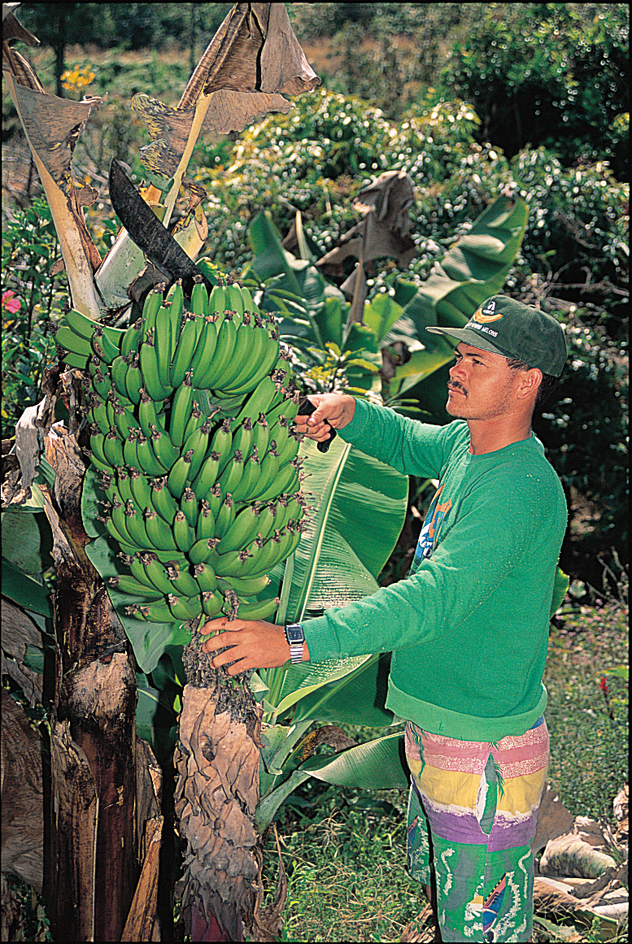
People in the United States eat about 25 billion bananas annually. Most of these bananas are eaten as snacks or in cereal, fruit cocktails, and salads. Bananas are also used in cakes and pies. Bananas are rich in carbohydrates. They also contain phosphorus, potassium, and vitamins A and C. Dried bananas are eaten as a snack and are made into flour.
Most bananas eaten in the United States have smooth yellow skin. The most important banana varieties are Dwarf Cavendish, Williams, and Grand Nain. Two varieties popular in other countries are Apple and a small red banana called the Red Jamaica. These fruits are rarely seen in the United States because they are too thin-skinned to be shipped safely. A large type of banana called the plantain is hard and starchy when unripe and is almost always eaten as a cooked vegetable.
Generally, only the fruit of the banana plant is used. But the leaves of some kinds of banana plants contain useful fibers. People in many tropical countries use the leaves of these plants to build roofs for houses and to make bags, baskets, and mats.
How bananas grow.
Bananas grow in hot, damp climates and thrive in rich, sandy loam soil that has good drainage. The fruit originated in Asia but is now raised in the tropics of both the Eastern and Western hemispheres. India is the leading banana producer, followed by China, Indonesia, Nigeria, and Brazil. Other leading banana producers include Angola, Colombia, Costa Rica, Ecuador, Guatemala, Mexico, the Philippines, and Tanzania.
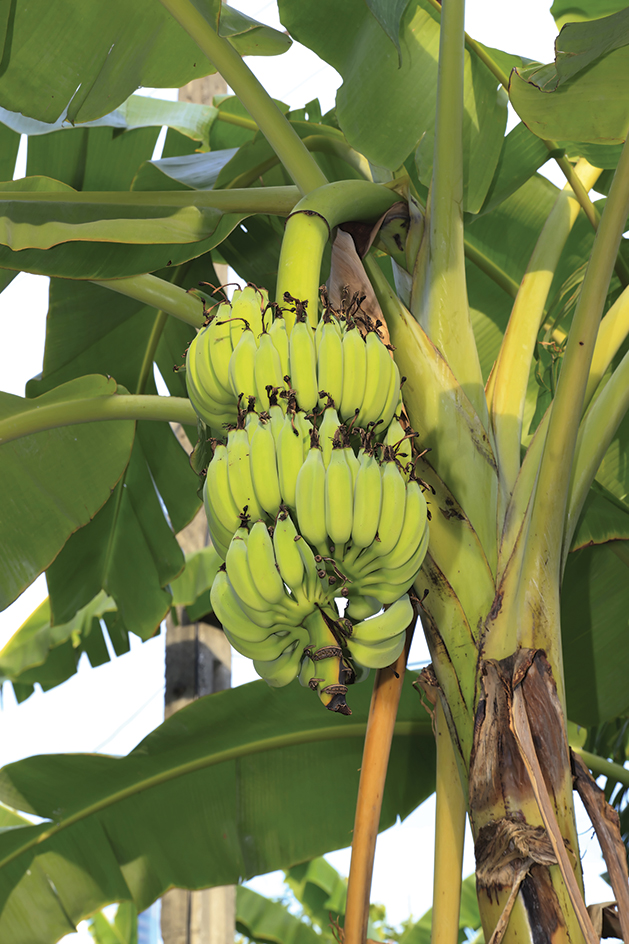
Banana farmers start a crop by cutting growths from the rhizomes (underground stems) of mature banana plants. These growths, called suckers, are planted in the ground. Three to four weeks later, leaves begin to unfold from the suckers. The young plants rapidly increase in size. Fully expanded leaves on mature plants look like large drooping feathers. They range from 6 to 10 feet (2 to 3 meters) long and from 1 to 2 feet (30 to 60 centimeters) wide. The “trunk” of a banana plant consists of a hollow column that is formed from the tightly wrapped stalks of the leaves. The trunk is also called a pseudostem.
When the plant is about 10 months old, a stem bearing a large bud grows through the center of the pseudostem. Many small purple leaves called bracts surround the stem. After the stem grows through the top of the plant, the bracts roll back, revealing clusters of small flowers. These flowers develop into tiny green bananas. Each cluster is called a hand and consists of 10 to 20 bananas, which are known as fingers. At least five hands of bananas grow on the stem of each banana plant.
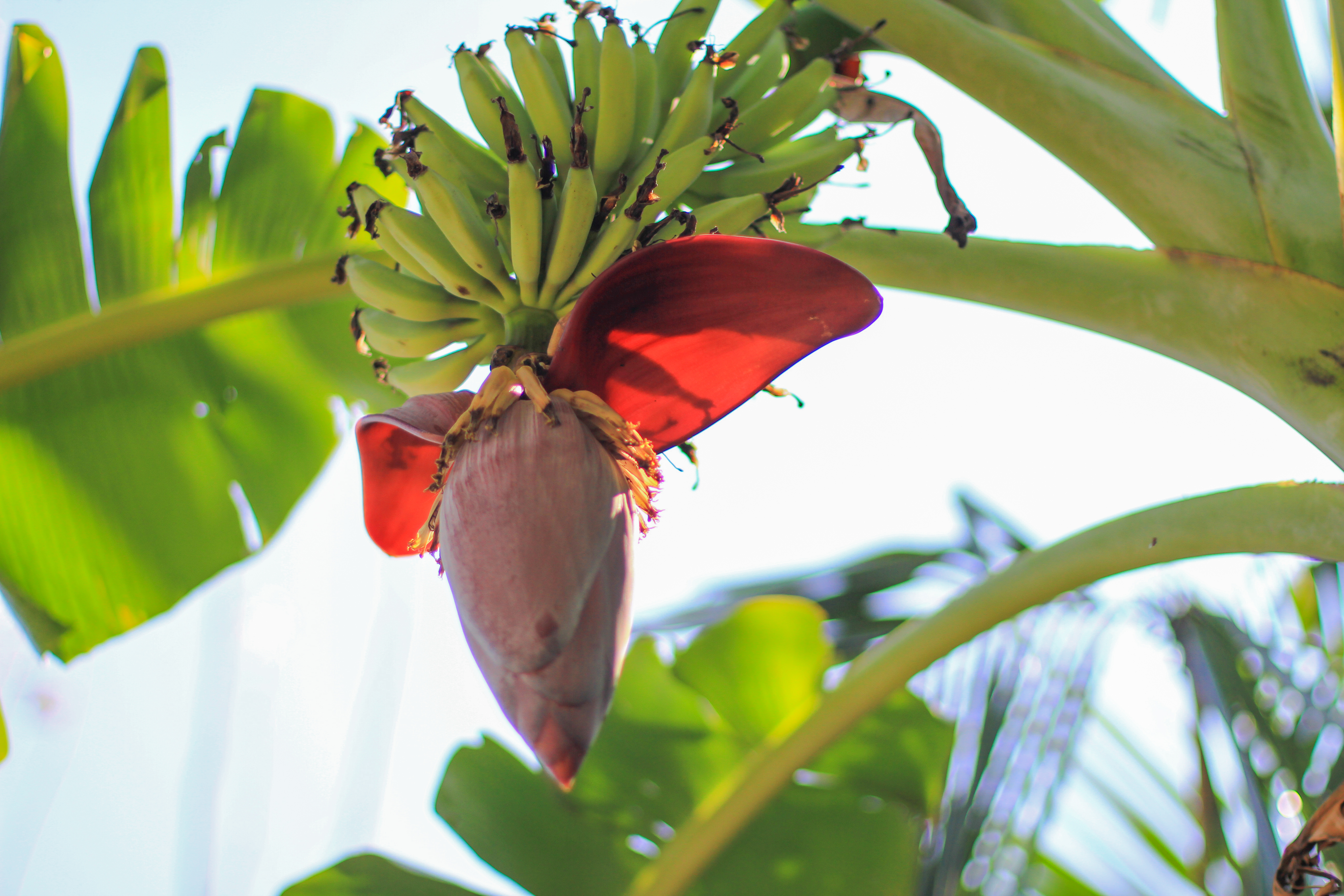
In time, as the fingers enlarge, the stem droops toward the ground and the bananas begin to curve upward. Bananas ripen unevenly after five or six months if left on the tree. When completely ripe, the fruit fall to the ground and must be eaten immediately or they will spoil. Therefore, bananas that will be exported are harvested after about three months, while still green.
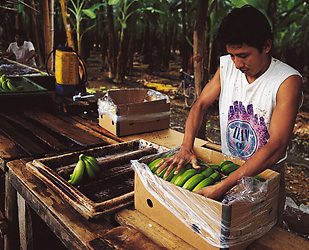
Bananas are transported directly from the field to refrigerated containers on ships within 24 hours after harvesting. During shipping, the fruit are kept at a temperature of 57 to 59 °F (14 to 15 °C). After reaching their destination, bananas are unloaded into temperature-controlled ripening rooms. The ripening process begins several days before the bananas are sent to markets. A small quantity of a gas called ethylene is introduced into the storage rooms. Ethylene stimulates ripening of the fruit. Gradually, during the following days, the green bananas turn uniformly yellow with brown specks. The bananas are then ready to be eaten.
A fungus disease called Panama disease destroys some varieties of bananas. Plants affected by this disease are replaced by varieties that can resist the fungus. The most serious threat to banana production is Sigatoka disease, also caused by a fungus. This disease can be controlled if chemical sprays are used soon enough. Another banana plant disease, Moko disease, is caused by bacteria. It can be controlled by removing the affected plants. Moko disease is spread by insects that feed on banana flowers.
The banana industry.
Until about 1860, bananas were eaten largely by people of the tropics. At that time, several merchants in Europe and the United States realized that exporting bananas could be profitable. They founded companies and established large commercial banana plantations.
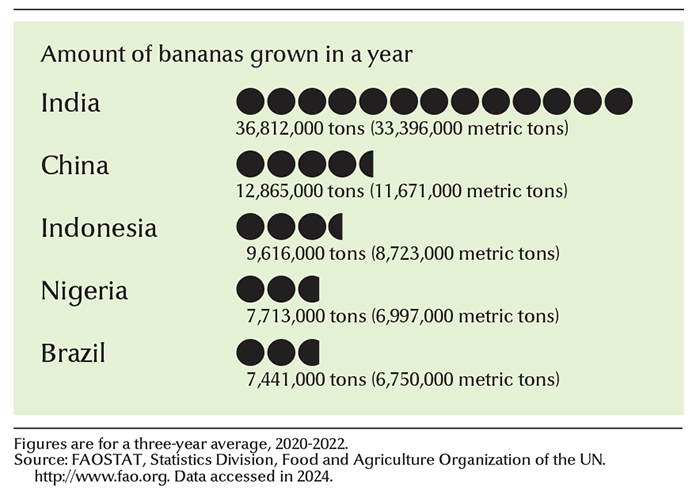
The first banana plantations were difficult to build. The banana companies cleared away jungles, drained the swampy coastal regions, and constructed roads, railroads, and communication facilities. They also built villages for their workers and established steamship lines to transport bananas throughout the world.
Through the years, banana companies bought more and more land in the banana-growing countries. By the 1890’s, the first firms had expanded into or had been replaced by huge international corporations. The villages grew into independent communities with housing, schools, stores, and hospitals for the workers and their families.
Today, the corporations control most of the $5-billion annual world banana trade. They strongly influence the economies and politics of the nations in which they operate. In 1974, to balance the power of the corporations, many banana-growing countries formed a business league called the Union of Banana Exporting Countries. The league has demanded—and won—higher banana prices and workers’ wages.
In 1984, several countries that fund agricultural research established the International Network for the Improvement of Banana and Plantain (INIBAP). This group supported research for improving banana and plantain production. In 2006, INIBAP became part of a biodiversity research organization called Bioversity International.
